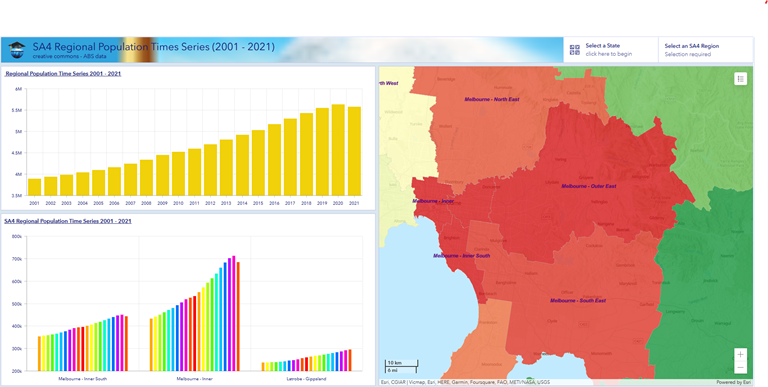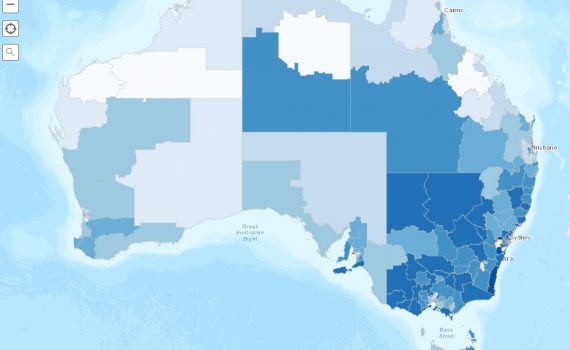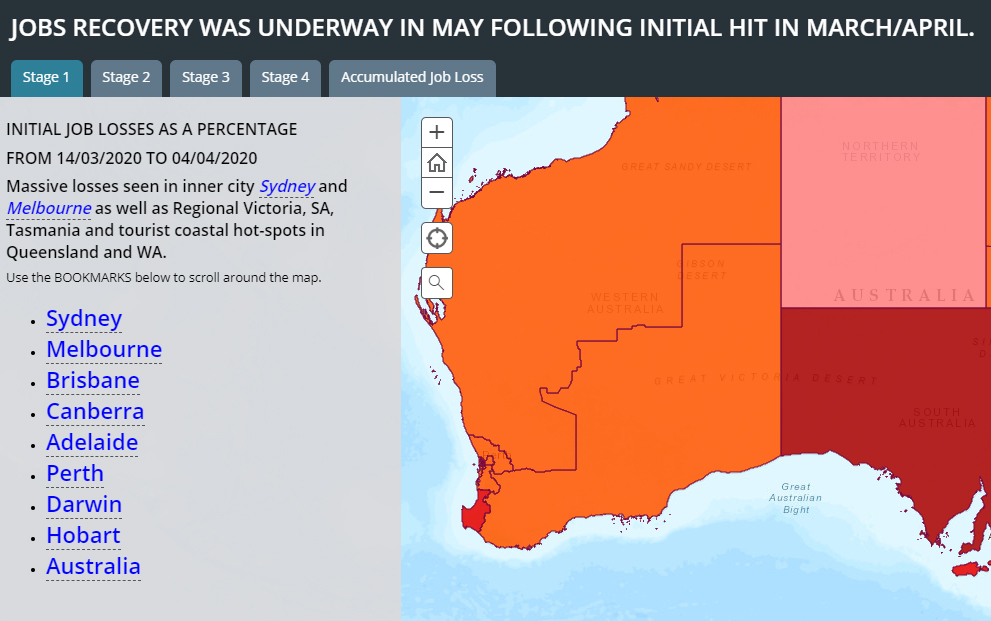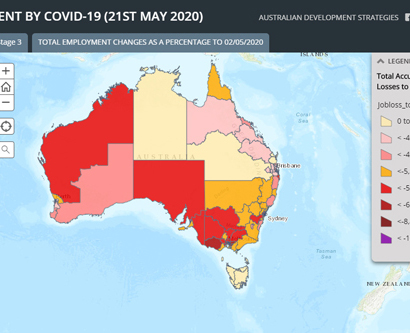Category:HealthTags : covid australiacovidau
By John Black, Chairman of ADS
So many readers enjoyed the online Covid Vax maps from Health Geographics CEO Dr Jeanine McMullan at https://arcg.is/1DeX1H0 that we decided to publish a short descriptive profile of the map data, with some relevant comments for those apparently in charge of the roll out.
Introduction. Those shown in the SA3 maps with both their first and second jabs against Covid as at August 28, included the old and the rich, the traditional Coalition voters, along with their Green-voting neighbours in wealthy inner-urban regions. These two demographics dominated the Melbourne seats which also swung heavily to Federal ALP candidates in 2019.
Those with neither jab were dominated by younger and lower income Working Families, living in the middle burbs, and the Digitally Disrupted, including the longer-term unemployed, living in lower SES outer suburbs and provincial cities, two groups which deserted the ALP in 2019 and returned Scott Morrison to the Lodge.
However, with recent Covid Delta outbreaks in NSW, where vaccination has become virtually compulsory for many NSW residents, there has been a significant recent rise in the numbers of demographics with first jabs only and this has come across wider age and income groups, making the roll-out more egalitarian and focused on classic Swinging Voters, home-buying families with kids.
Process
To get some reasonably reliable demographic profiles of vaccination rates, we took Australian Government Health Department vaccination rates by SA3 as at August 28, for those 15 years and older with one and two jabs and then we controlled for outlying state and regional anomalies, driven up by Covid outbreaks in New South Wales and held back by roll out road blocks in outback regions.
We had to control for outbreaks because it is becoming blindingly obvious that Covid vaccination rates are being driven up among mainstream demographics by Covid Delta outbreaks, which, sooner or later, will impact most harshly on the low-vax states of Western Australia and Queensland.
Profile of the Fully Vaccinated with Two Jabs
The profiling tells us that Covid outbreaks weren’t needed to drive strong vaccination rates among the elderly and the better-educated rich, especially those retirees living off private super funds, who tend to have private health insurance and spend an awful lot of money on their health needs at their Family Doctor, their dentist, their optometrist or their physio.
The better-off elderly persons with Senior Health Care cards were near top of the list.
This group became eligible because their age and vulnerability to Covid Alpha prioritized them in the vaccine queue. And, because older voters typically support the Coalition, those vaccinated as at August 28 voted for the Coalition in 2016, but a bit less so in 2019, when this older and richer demographic drifted to the ALP, especially in Melbourne’s Goat Cheese Circle.
Culturally, we found fully vaccinated regions contained more migrants from wealthier countries, such as Canada, Germany, Hong Kong and Japan.
A lack of faith featured prominently here, with the big Green-voting group of Agnostics top of the list for those trusting in the science and getting access to the rollout.

Those least likely
Those least likely to be fully vaccinated were dominated by those in the bottom income quartile, mainly those on some form of transfer payment, other than the big group of those on the aged pension.
They were joined by the big blue-collar groups of less qualified low-wage earners working as labourers, plant and machinery operators or as transport and logistical workers, which is causing the current delivery chain chaos in western Sydney.
We also found certificate-qualified, average-income earners in receipt of Family Tax subsidies, working as Tradies, service workers or sales workers, often in mining or manufacturing industries.
Migrant groups strongly represented across regions with low vaccination rates were dominated by the big group of Kiwis, along with those born in Vietnam and Pakistan and followers of Islam or Sikhs.
Across these under-vaccinated groups, we came across many of those belonging to the smaller, evangelical Christian faiths, the sort who elected Kevin Rudd in 2007 and re-elected Scott Morrison in 2019 across a wide range of outer-suburban or regional seats in Queensland and NSW.
These include Christians not fully defined, along with smaller groups of Jehovah’s Witnesses, Mormons, Seventh Day Adventists and Pentecostals, all of which lined up behind Scott Morrison in 2019.
Again, more narrowcast social media networks could have played a part here with evangelicals, as mainstream Christian faiths were not significant markers for the unvaccinated. These included Catholics, Anglicans, Uniting, Presbyterians and Lutherans.

Profile of those with time only for One Jab
Those with one jab only represent persons who have recently qualified to join the queue by virtue of age, location or some other criteria, such as state mandates, as well as those more strongly motivated by recent outbreaks in NSW and Victoria to become fully vaccinated.
Given the delay between the first and second jab there’s going to be some overlap between these groups, but looking at the difference between the two rates tells us something about these groups that a competent Government could find useful.
We will keep an eye on these trends, but all that we could glean so far is that the updated eligibility demographics for those aged 40 and above and a widening range of selected groups aged 39 years and below seem to have democratised the vaccine roll out considerably.
Whereas before the vaccine was mainly for the old and the rich, it is now being taken up more by mainstream Australians: low- and middle-income blue-collar families, paying off their own separate home, with two or three kids at public schools and a couple of cars in the garage enabling commutes to two jobs. We’re talking Swinging Voters here folks and they want their kids safely back at school, with teachers and students – starting with high school students – vaccinated.
Even in the last week, we’re also seeing signs of those overlapping working-class demographics dominating western Sydney, shown in darker green on Dr McMullan’s online map: Transport Workers, Clerks, the Unemployed, Arabic-Speaking families, parents of kids at Government schools, migrants from Fiji the Philippines, Lebanon and Pakistan, followers of Islam.
What we are now seeing are glimpses of what could have happened in Australia, if we’d purchased enough supplies of vaccines when we had the chance, allied to a roll-out becoming open to all wanting to be vaccinated. As my favourite Covid statistician, the ABC’s Casey Briggs would say: who’d have thought?
The lessons your humble correspondent – with no pretensions to expert status on Covid – would draw from the evidence here, are that the Government should focus pro-vax campaigns on less well-educated persons, blue collar workers and their unions, along with non-English-speaking migrants and those with time on their hands to waste on social media fruitcakes.
Prosecution of a coherent and consistent case from the Coalition Government would be a good start. A bit of old-fashioned national leadership on a policy framework for mandating vaccinations for key workers would help too. And the sort of ticker we saw from John Howard when he fronted up to a crowd of angry gun nuts wearing a bulletproof vest to argue for gun control.
John Black has pioneered demographic and political profiling in Australia since the early 1970s and is a former Labor senator for Queensland. He is Executive Chairman of profiling company Australian Development Strategies and the relevant vax map can be found at https://arcg.is/1DeX1H0


















